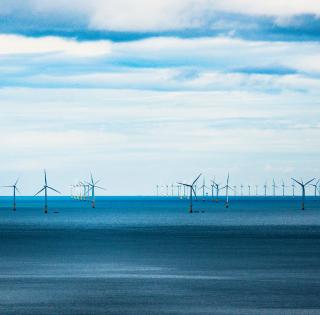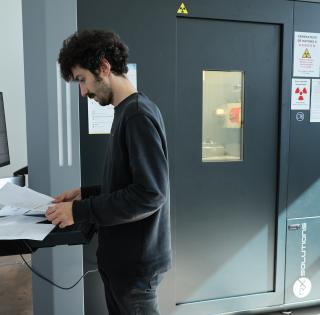
His academic pathway
Christophe has been fascinated by robotics ever since he was a child (he already wanted to understand how things worked when he was just 6 years old!) and set his heart on studying science and engineering at an early age. In 2014, he completed his thesis on a robotics-related subject : what strategy for reducing the number of communications in a fleet of robots.
Christophe: “The aim was to reduce robots’ energy requirements and improve efficiency by exchanging only the amount of information required. As long as the robots do not deviate from the intended route, no communication is necessary. Communication is triggered solely when something unexpected happens to redefine the common strategy. This thesis subject is strongly geared towards mathematics and automation. I also had to reach the best compromise between theory and practice and that’s what I enjoy about research: adapting in line with requirements and ensuring that newly developed methods can apply in different situations. Doing public research means that I can explore altogether original solutions, by thinking outside the box, but always in connection with the areas of application.”
Christophe then rounded off his marine robotics studies in the UK, in a Plymouth-based laboratory where he completed a post-doctorate. There, he was part of a team tasked with developing fully autonomous sailboats for a university competition, the World Robotics Sailing Championship (WRSC):
“I drew a great deal of inspiration for that from the studies and mathematical solutions published by ENSTA Bretagne’s roboticists who have participated in this competition on numerous occasions. That’s when I perceived the immense potential of this team and the interest of conducting my own research in marine robotics with them. I returned to the South of France first, however, and joined another exciting bio-robotics laboratory, the ISM (Institute of Movement Sciences), where I worked on equipping a helicopter with “insect eye” inspired sensors to detect and avoid blade contact with obstacles. The system has, incidentally, been patented by the project director.”
But marine robotics continued to appeal to Christophe, who watched the ENSTA Bretagne team’s research with keen interest.
“I applied to the CNRS by presenting a research project in underwater robotics for exploratory purposes and asking to be assigned to Brest, at ENSTA Bretagne, in the LabSTICC* laboratory. The project was selected and my posting to Brest accepted.”
Christophe arrived at ENSTA Bretagne in February 2021 and immediately got to take part in the experiments performed on Lake Guerlédan to train using the school’s robots. The lake and the dam were ideal sites for subsequently testing his mathematical models and an underwater inspection robot prototype.

His research subject
The marine robotics research that Christophe conducts is aimed at improving remote-controlled underwater drone systems used for inspection or maintenance purposes. These remotely-operated vehicles (ROVs) are now widely used. They are distinctive in that they are tethered to a station on the surface (platform, dock or vessel) to transmit the video to an operator: the drone films the inspected object and the operator watches this video to conduct his or her mission. Operational problems have been identified when the tether is not taut: it gets buffeted by the currents and tends to end up all tangled up around itself or an obstacle, putting the mission in jeopardy.
Christophe undertook to secure the tether with weights and buoys on pulleys so that the latter can move freely along the tether to ballast it, bringing its movements under control and making them possible to model. As is often the case in research, one solution can lead to another: the tether angle measured from a point on the surface (e.g. a boat) and the ROV provide information about the location of the robot. An article was published in Ocean Engineer at the end of 2022 and another is about to be published.
Christophe is also interested in fleets of robots which would significantly increase intervention or inspection capabilities. These situations are even more fraught with challenges. The robots are also inter-connected by tethers in this instance.
“The cost of acquiring a robot is now much more affordable, which is driving a boom in underwater robotics for exploratory purposes. Many new scientific challenges are emerging as a result. The ENSTA Bretagne team has a wealth of knowledge and facilities at its disposal for developing methods and ensuring their reliability: this is an undeniable advantage. When the new robotics pool is finally ready, we’ll have even more scope in this area.”
Construction of the future robotics pool is scheduled to begin in 2023. It is expected to be inaugurated in 2024.





















